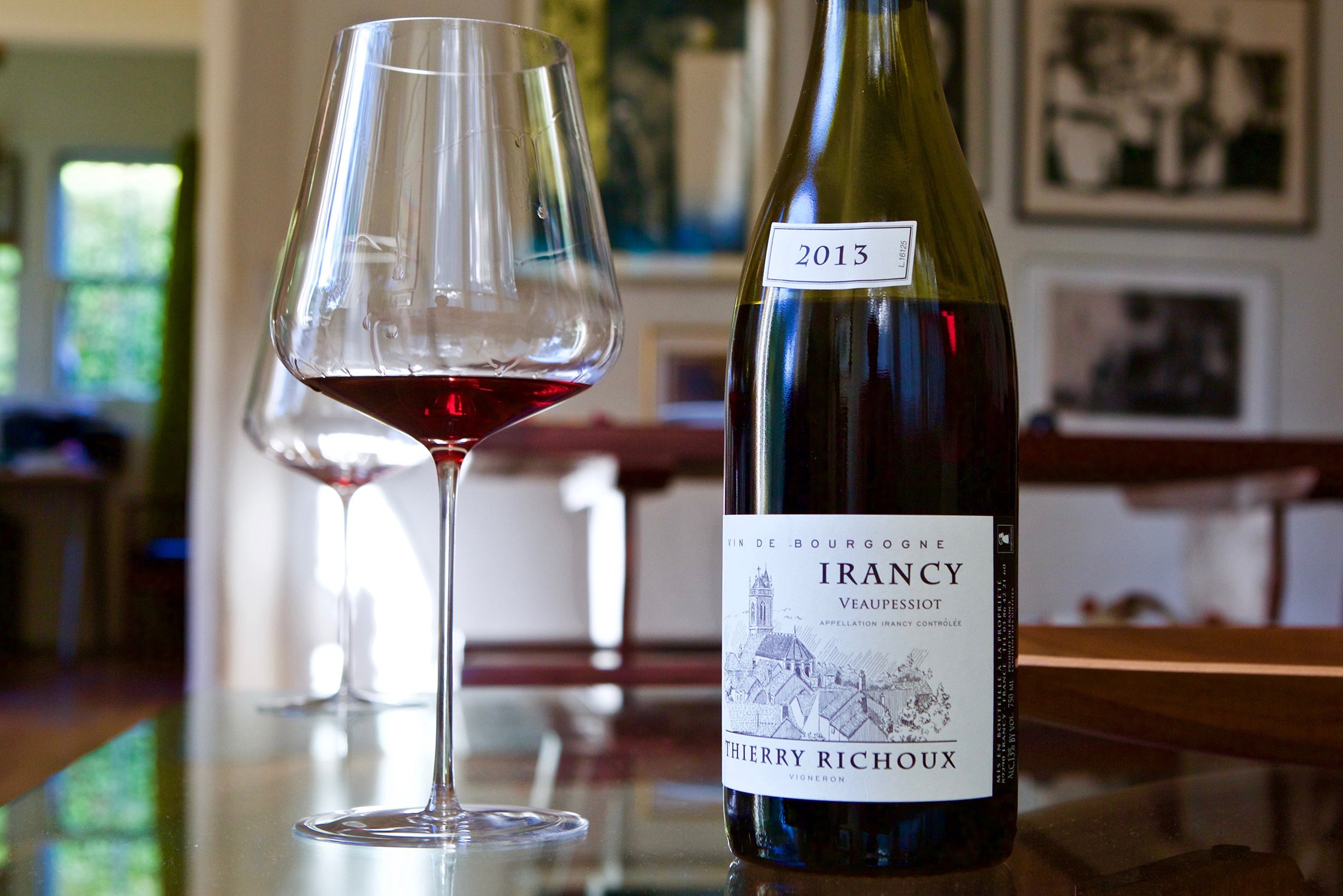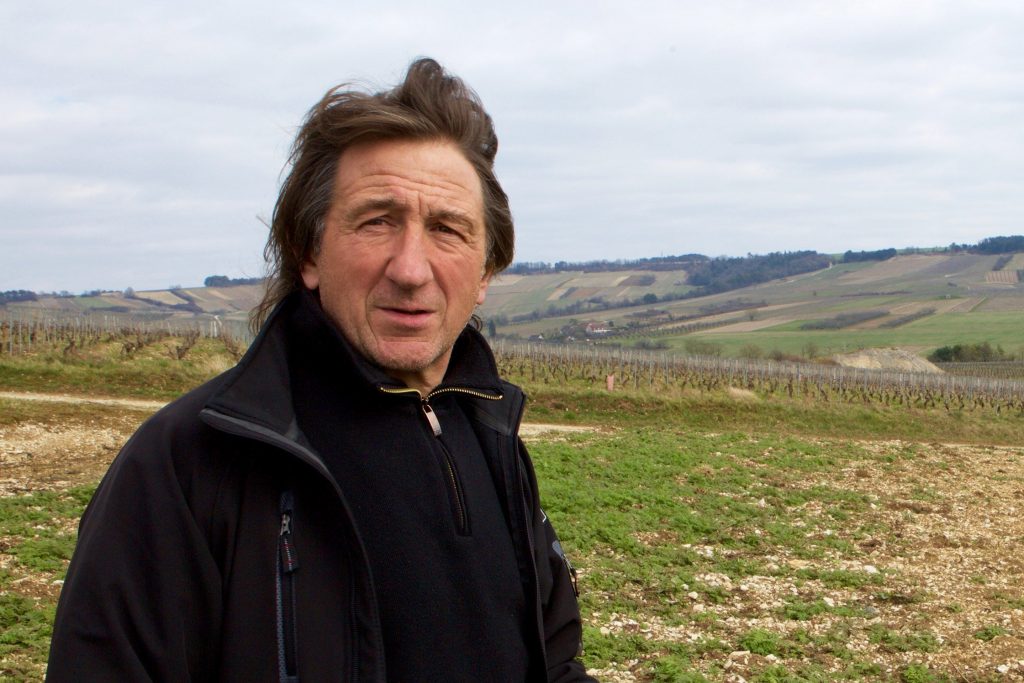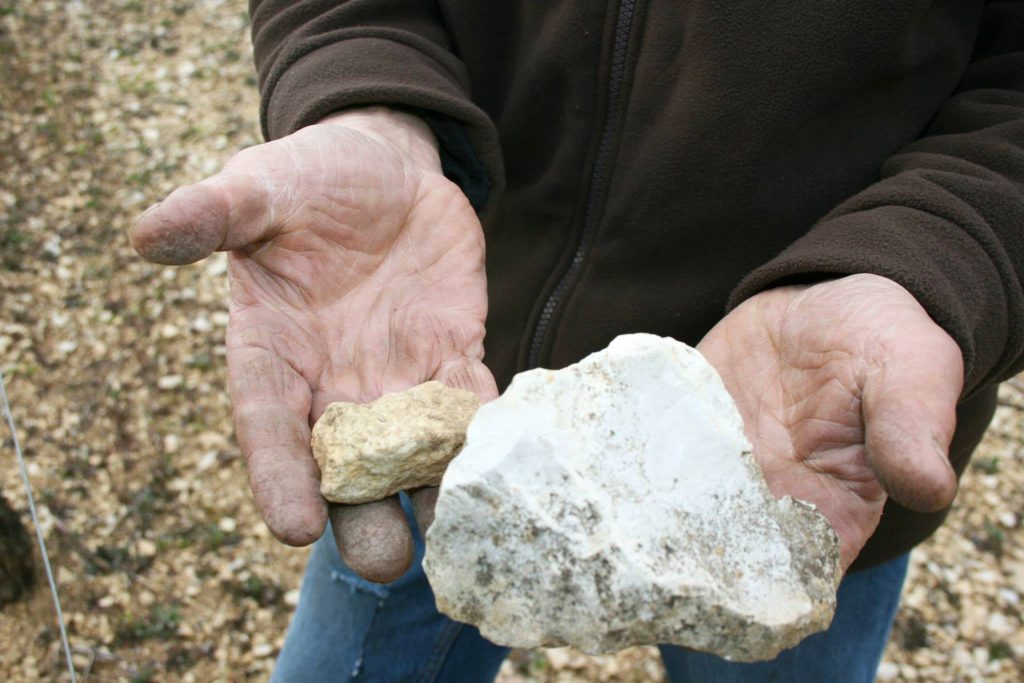
After a quick visit to try the new vintages at a winery in Épineuil (where the vigneron was out of town), we headed back toward Chablis and passed through Fleys, a village maze of tight canyons between crumbling stone and limestone brick buildings. There was no evidence of stores or commerce of any kind, and though there were some signs of life, on that day the place seemed completely deserted; I didn’t see a single soul. It felt like the French version of a western ghost town. As an outsider, it seemed romantic to me, the idea of getting a flat or little house in that empty place, settling in and working without interruption. But in truth, like with so many little French hamlets, it seemed sort of like a beautiful slum, a place where migrant farmers go to sleep during harvest. Many of my favorite buildings in France continued to be the ones that looked like they were about to fall down.
To the southwest of Chablis is the town of Irancy, home to one of Ted’s favorites, Thierry Richoux, and we were meeting him for lunch at a bistro called Le Soufflot. We got there and were immediately greeted by a friendly, energetic guy who sat us and took orders from other tables; he was running the whole show. The restaurant space is bright and airy, with white tile floors, blonde wood tables and chairs, rough sandstone finished walls covered with colorful wine region maps, and a glass ceiling webbed over with thick green grape vines, just out of reach.
Ted studied the list while we waited for Thierry to break away from work to join us. He was excited; the place is known for its amazing selection, and he ordered a bottle of the 2014 Saint-Aubin 1er Cru from Hubert Lamy, and this was our second bottle in two days (we had one the night before at Les Trois Bourgeons). Ted imports and sells many of Lamy’s wines, but he’s only allotted a dozen or so of this one for all of California.
Thierry came in, full of apologies for being late. He’s wiry and deeply tanned, with windblown, longish brown hair, a sculptural aquiline nose and smiling eyes like horizontal commas. His handshake is firm and leathery, his fingers as strong and callused as a mechanic’s. The server/maître d’, greeted him like an old friend and poured him a glass of the Lamy.
He settled in and caught up with Ted for a while before I was able to ask him some questions myself. He told me that he had just come from a small parcel with buds that had succumbed to the frost of the night before; it did turn out that Collet and others had to light the fires again. Thierry was grateful for how few he had lost, but he knew they weren’t in the clear just yet.


Some of the other producers were employing another technique to stave off the frost, the polar opposite of fire: though irrigating grape crops in France is illegal, it is permitted to spray the vines with water on nights when the temperature plummets, so that a thin layer of ice forms on the buds or shoots. Counterintuitive as the practice might sound, this shell can actually provide protections from freezing. But Thierry remarked that the jury is still out as to whether any of the methods people try actually work.
He has two sons who’ve worked with him since they were twelve and thirteen years old. Now they’re twenty-two and twenty-five, and they assist him along with only one other employee most of the year, pruning and pegging his twenty-three hectares of Pinot Noir. From May to July they bring on six more people, and of course many more for harvest. He’s been making wine since 1979 and says, “it’s always different. There isn’t a recipe.” Whatever he’s doing, it’s working; his wines are some of Ted’s favorites.
Ted said, “He sells seventy percent of his output straight to customers who come for tastings from as far away as Paris every weekend. At retail prices!,” with an enthusiasm that deepened the color on Thierry’s face. Yet, as humble as he is, he also smiled with pride.
Talk turned to the growing popularity and demand for biodynamic farming, for which Thierry is known. He noted that “a lot of producers use it as a selling point while the priority of quality comes second.” Despite his success, it’s clearly very difficult to cede control of the process to nature and still achieve consistency. “Many of these guys talk a lot more about bio than they practice,” he added. Ted said, “that’s exactly why I visit all of the producers I work with, to see they’re practicing what they preach.” So far, everyone who’s told him up front that they work this way appear to be telling the truth.
For a starter I ordered their “œuf parfaits” with red wine and mushrooms—a variation on the Bourgogne specialty, œuf en meurette, that I had passed on the night before at Les Trois Bourgeons. What came was a beautiful bowl of eggs poached in red wine and layered with chopped mushrooms and frisée, and it was an incredible mélange of flavors and textures, earthy and decadent. My plat principal was a breast of goose with caper and celery purée topped with crisp cheese disks. The meat and accompaniments were asymmetrically placed like little modernist park sculptures, among dabs and lines of colorful sauces from an abstract painting, all sprinkled with yellow flower petals. It was so fun to look at that it seemed a pity to ruin it. But as with a lot of the meals I ate on the trip, I was less caught up in knowing the minutia of composition, and more concerned with being well fed (I was hungry), and Le Soufflot did not disappoint.
After lunch, Thierry took us to the wounded field he had come from earlier.
As we walked up and down the rows, everyone was respectfully quiet; the air carried the mournful feeling that something unfortunate had just happened. He reached down and gently cupped a cluster of buds, but his careful movements were unnecessary; they were all dead. Healthy buds are green and fuzzy, with a purplish hue, whereas these had gone white-gray and brought to mind cigarette ash. We nodded solemnly as he gestured to the other places that had been hit, which seemed completely random in their spotty placement. Frost is mercurial like that, striking at random and infuriatingly difficult to ward off, despite all the wild techniques people try.
Luckily—or rather, more from experience, Thierry had not yet tied the vines down to the wires, which allows them to remain upright and further from the ground where it gets the coldest. Vignerons who did this prematurely were making a big mistake, a bet they were likely to lose in seasons like this; many of the vineyards in the surrounding areas had already suffered huge losses on recent nights. Again, Thierry expressed gratitude that he had been relatively spared so far. Knowing that we would see him again soon, we said à bientôt, and left for our second business appointment of the day.

